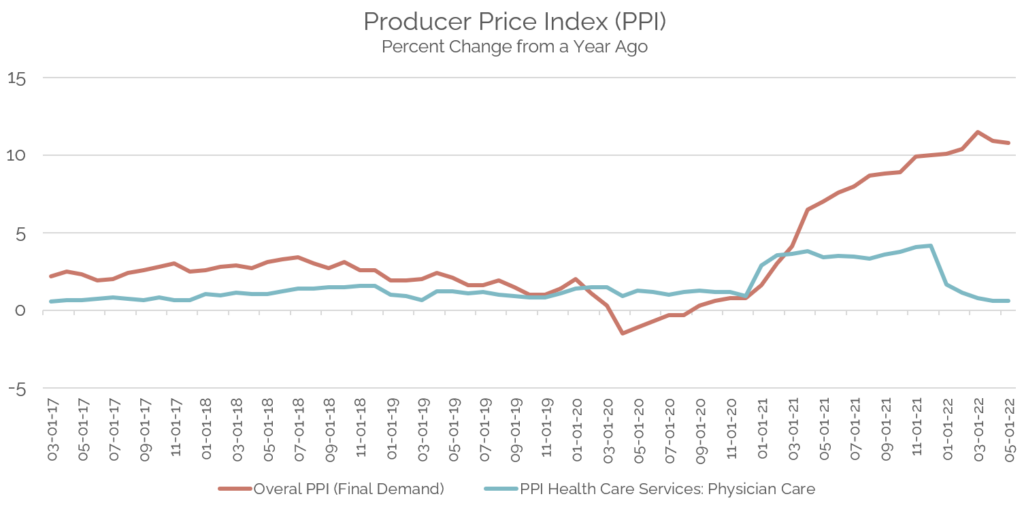The Producer Price Index (PPI), which measures change in the prices paid to US producers of goods and services, continues to reflect the intense inflation being seen across many industries. For healthcare services and physician care, the PPI has yet to show much of a blip. Annual change for all goods and services remains high at 10.8% while physician services slowed to .6% from a year ago. For reference, the PPI for physician care encompasses Medicare, Medicaid, private insurance and all other patients. Insurance reimbursement rates are typically negotiated once per year and these new rates go into effect in January. Looking at the annual index changes, this is reflected as the biggest jumps are almost always in the month of January. So while inflation has climbed to record levels this year and we now know it is not transitory, insurance rates for the year have already been set. Throughout this year, the cost for basic supplies, salaries and rent are increasing, but physician payment for services is not. This is very likely causing financial pressure physician practices. Once new rates are negotiated and go into effect in January, assuming they go up more aggressively, those practices may find it easier to cover their costs – including rent and rent bumps. Stay tuned to Revista to see how this impacts trends moving forward!



